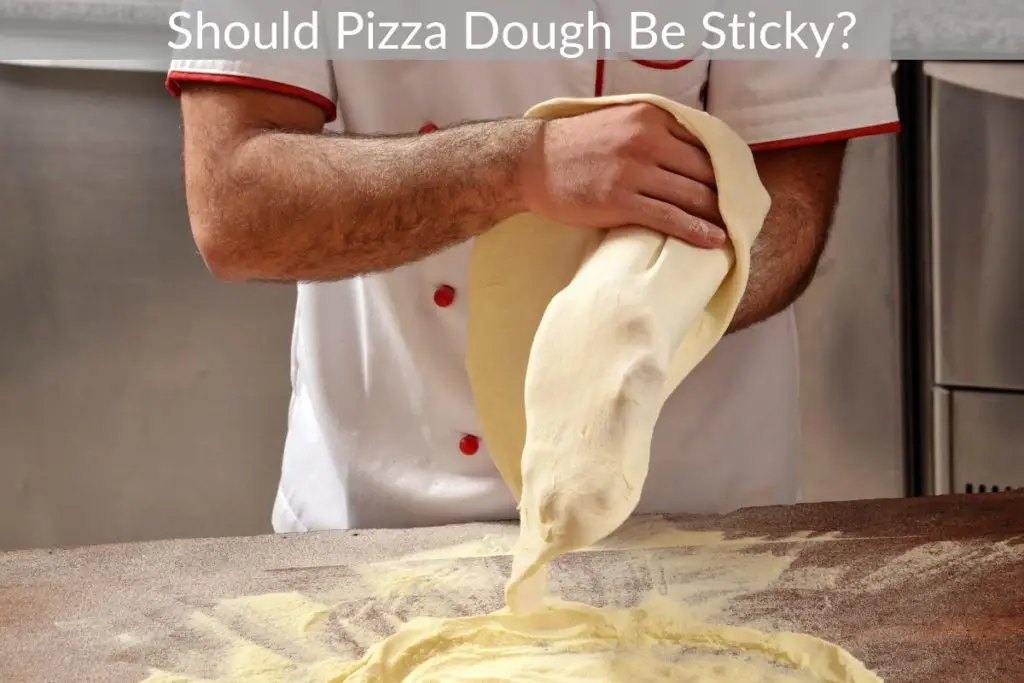
Should Pizza Dough Be Sticky?
Leave the dough to rise and rest in the bowl. This will prevent the dough from sticking to the bowl. When the dough gets stuck in the bowl, scrape the inside with a dough scraper to release it. Cover the peel with plenty of semolina before adding the dough if you wish to cook a sticky dough.

How To Prevent The Pizza Dough From Getting STICKY YouTube
So, either play safe by opting for a low-hydration dough recipe or use a dehumidifier in the room you will be using for pr oofing the dough. 4 Ways to Fix a Sticky Pizza Dough. First of all, stop hyperventilating. I have already established that stickiness is not a bad sign. With a little practice, you will be able to work with sticky dough.

What to Do with Pizza Dough That Is Too Sticky Baking Kneads, LLC
The most expected reason why the dough is too sticky is excess water, or to say otherwise, too much hydration. Dough hydration is the proportional ratio of the weight of water to the weight of flour. For example, if you take 700g of water and 1000g of flour, the hydration will be 70%. 700g/1000g * 100% = 70%.

Why Is My Pizza Dough Too Sticky? Pizzaslop
Handle sticky dough with a dough scraper during kneading and rest the dough after kneading. Dust the working surface with flour or use a thin layer of oil when stretching the dough. What Makes Pizza Dough Sticky? There are several factors that can contribute to pizza dough becoming sticky.
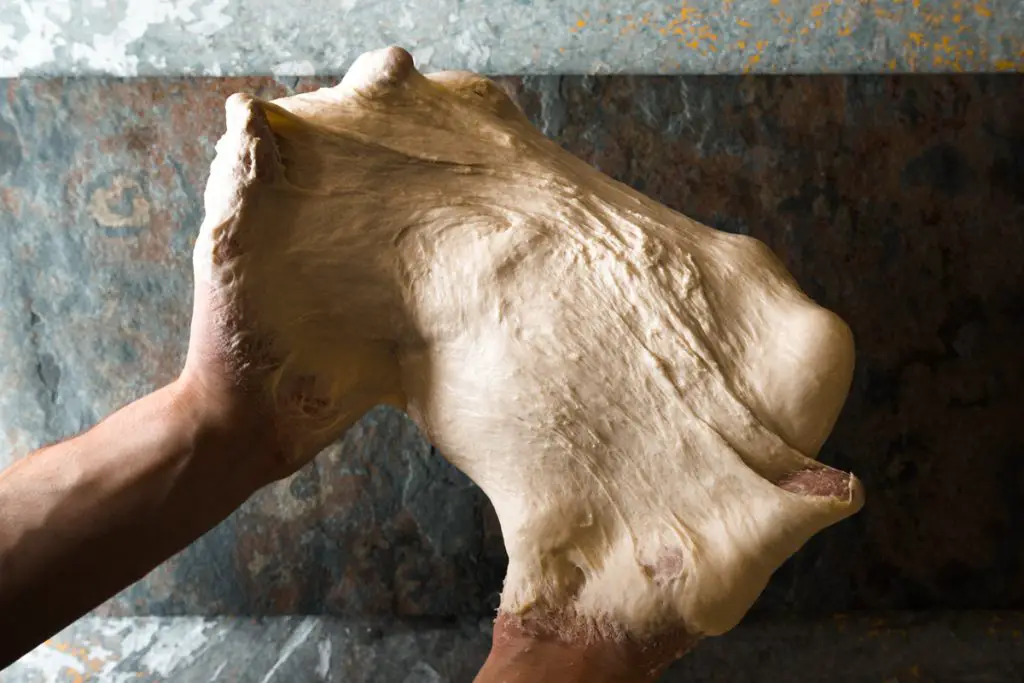
Why is my pizza dough too sticky after rising? Perfect Pizza Guide
If the dough is still sticky, you can apply some other kneading techniques such as kneading, patting, and folding the dough with one hand. Remember, persistence is key when it comes to kneading pizza dough! 3. Use Oil. Using a bit of oil on your hands or work surface can work wonders in combating sticky pizza dough.

CarmenChanCooks 2 ingredient pizza dough
Aim for a hydration level of 60%, this means that for every 100 grams of flour you are using 60 grams of water. Use Pastry Flour (also known as 00 flour), with at least 13% protein. Put a plastic wrap over the bowl in which your dough is rising, this will prevent the room humidity from interfering with the dough.
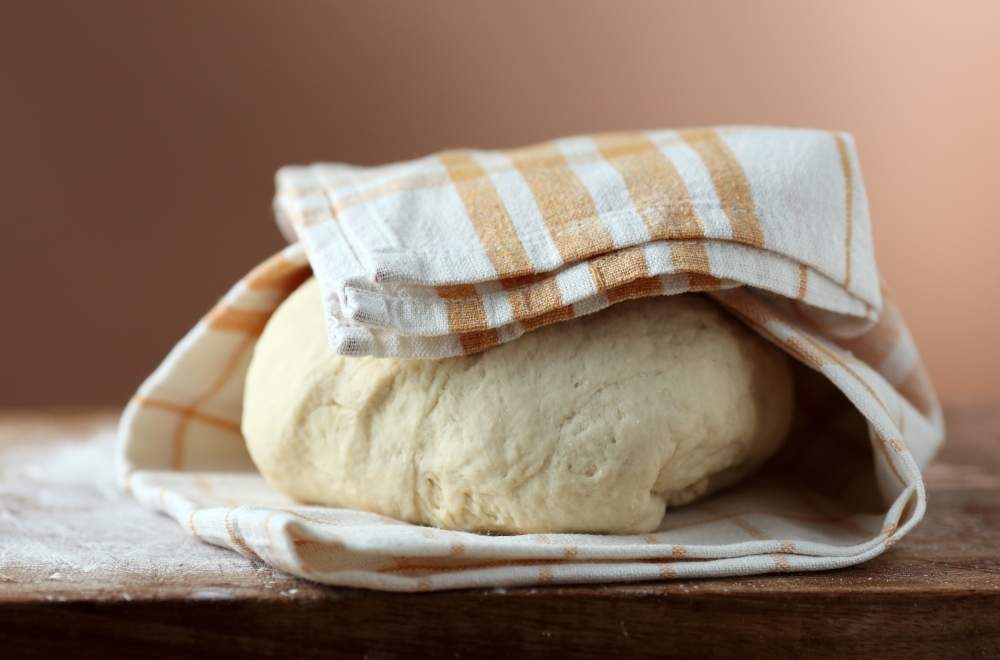
Sticky Pizza Dough 7 Causes Why It Comes And How To Fix It
Pizza dough can be sticky for a variety of different reasons, such as using the wrong flour, adding too much water, or not enough gluten development due to a lack of kneading. Mastering the art of making pizza dough can take time and practice. However, with these helpful tips, hopefully, you have a better understanding of why your pizza dough.
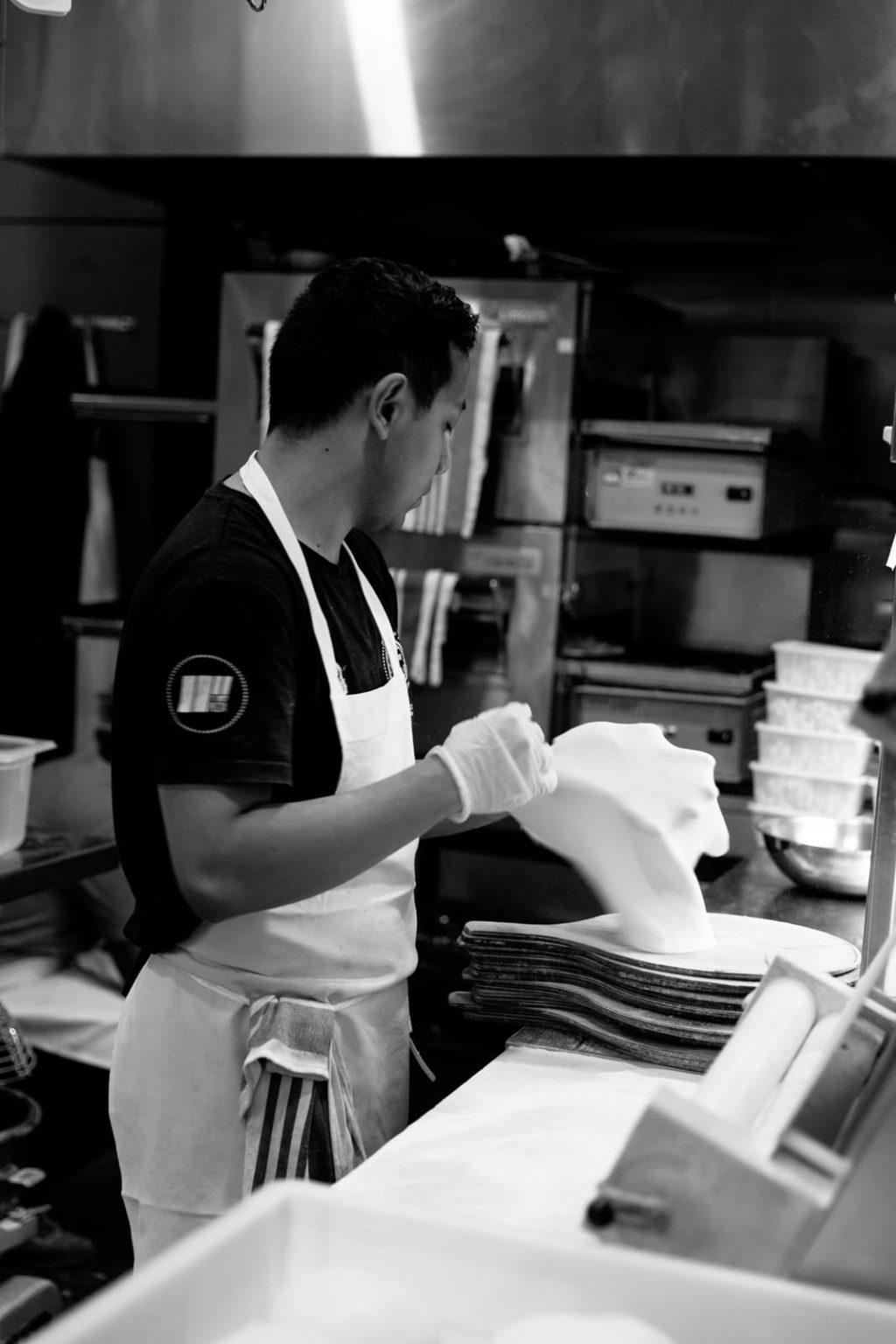
5 Ways to Take Your Pizza Dough to the Next Level
The number one reason for pizza dough stickiness is high hydration, which means there is too much water in the dough. Dough hydration is expressed as a percentage of the total amount of flour. 80% hydration, for example, could mean that there are 800 grams of water in 1000 grams of flour. Generally, the higher this percentage is, the wetter and.

4 Reasons Why Your Pizza Dough Is So Sticky (Fix Methods)
Step 10: Cut the cylinder into slices. Step 11: Place the slices on a baking sheet covered with parchment paper. Step 12: Let the dough proof for about 30 minutes. Step 13: Preheat oven to 450°F 230°C. Step 14: Bake the pizza crusts for about 10 minutes. Step 15: Remove from oven and cool completely.

Pin by My Info on DOUGH PIZZA in 2020 Pizza recipes dough, Pizza
Hydration and Ingredients. One main reason a pizza dough turns out too sticky is due to high hydration levels. This means there's too much water compared to flour in the dough. High hydration could lead to stickiness, but it also results in a lighter base. Some people aim for a dough hydration above 60% to achieve the perfect crust.
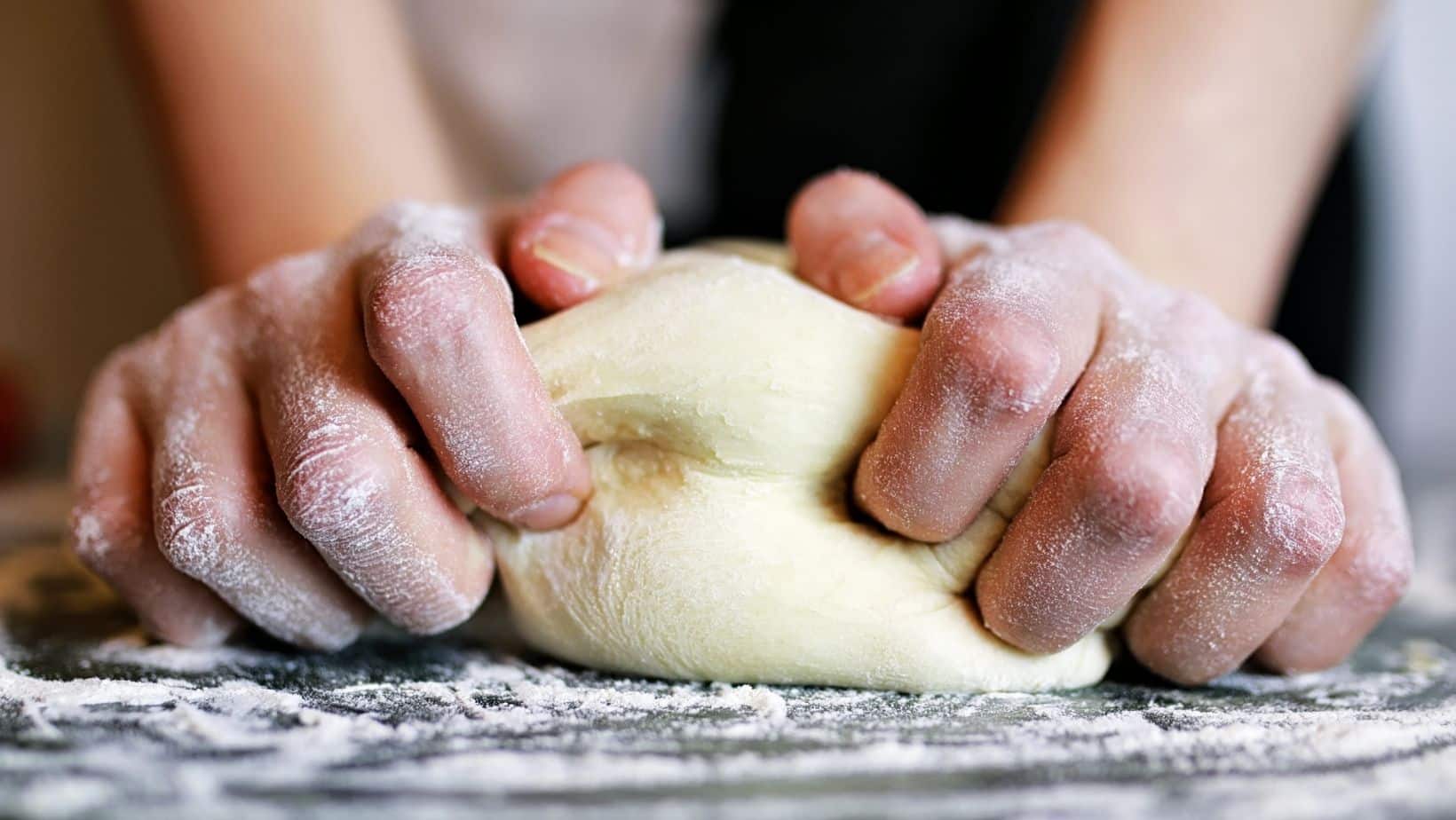
Pizza Dough Too Sticky? Guide On Stopping Sticky Dough
Sticky dough is a very common and irritating problem that people face when making pizza at home. But don't let yourself feel like a newbie, even professional pizza chefs face sticky dough once in a while. Most of the reasons for sticky dough are caused when people don't work right with dough.. But don't worry, that's completely fixable, and if you read until the end, the possibility of.

Why Your Pizza Dough Isn't Smooth And Elastic (Fix It) Crust Kingdom
One of the most common reasons for sticky pizza dough is the ratio of flour to water. If you have too much water in your dough, it can result in a sticky and difficult-to-work-with consistency. Additionally, using the wrong type of flour can also contribute to stickiness. Different types of flour have different protein levels, which can affect.

What to Do with Pizza Dough That Is Too Sticky Baking Kneads, LLC
Proper Kneading. Sometimes the reason why your pizza dough is too sticky is actually just because you haven't kneaded it for long enough. All pizza dough starts off sticky, and you really need to knead it for at least 8 to 12 minutes. As long as you have used warm water and the environment in which you are kneading isn't too humid, your.
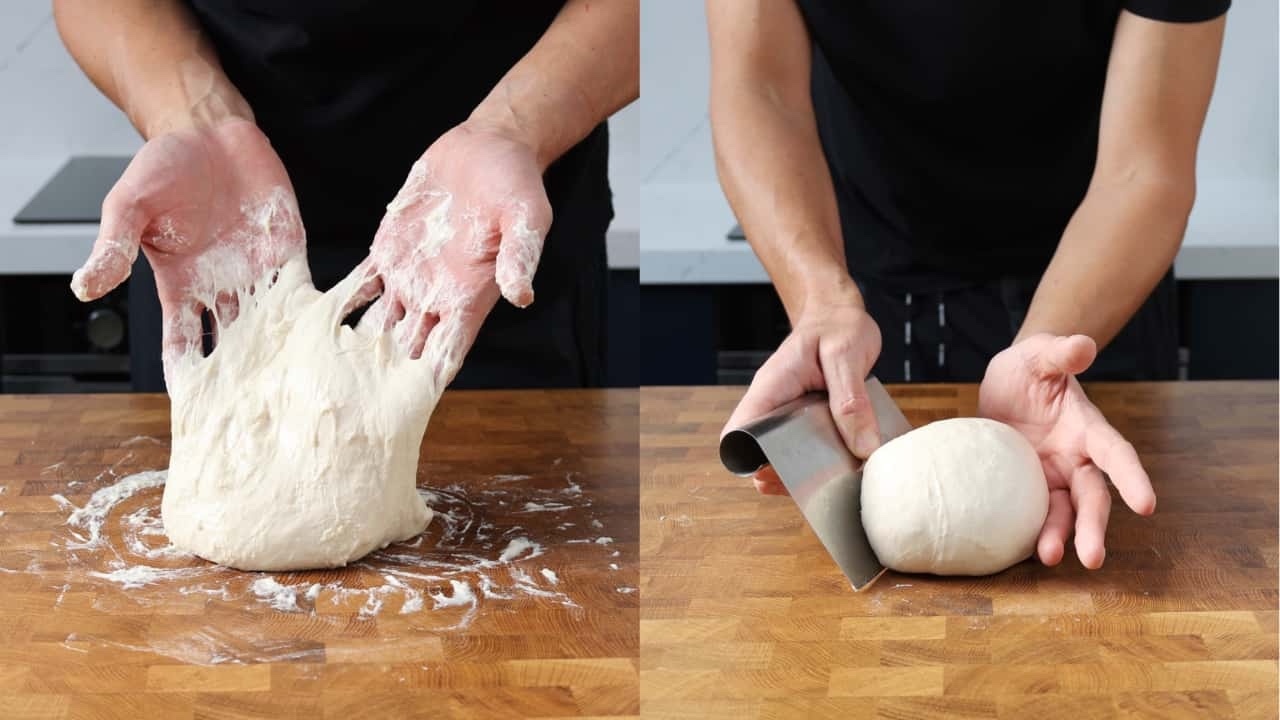
Why Your Bread Dough is Stick and how to Fix it Easily
The most common reason your pizza dough is sticky is that it has too high hydration, meaning it contains too much water. Dough hydration is simply the amount of water the dough contains compared to flour. You express to hydration as percentages. E.g. 70% hydration.

How to Prevent Pizza Dough from Sticking to the Peel YouTube
Adding flour will take the stickiness away. You should go slowly and add a little bit of flour at a time. Knead the dough thoroughly each time you add a little, and repeat this process until the dough is no longer sticking to your hands and the surface. If you have used too much water, this should fix the problem.

Readymade pizza dough with tomato sauce about picking pizza. Baked
A dough scraper will make your life infinitely easier. Tip #2: Cover your hands with water. One of the most significant issues with working with sticky dough is that it sticks to your hands. Avoid this situation and have an easier time shaping your pizza dough by covering your hands with water. Tip #3: Add a little oil.